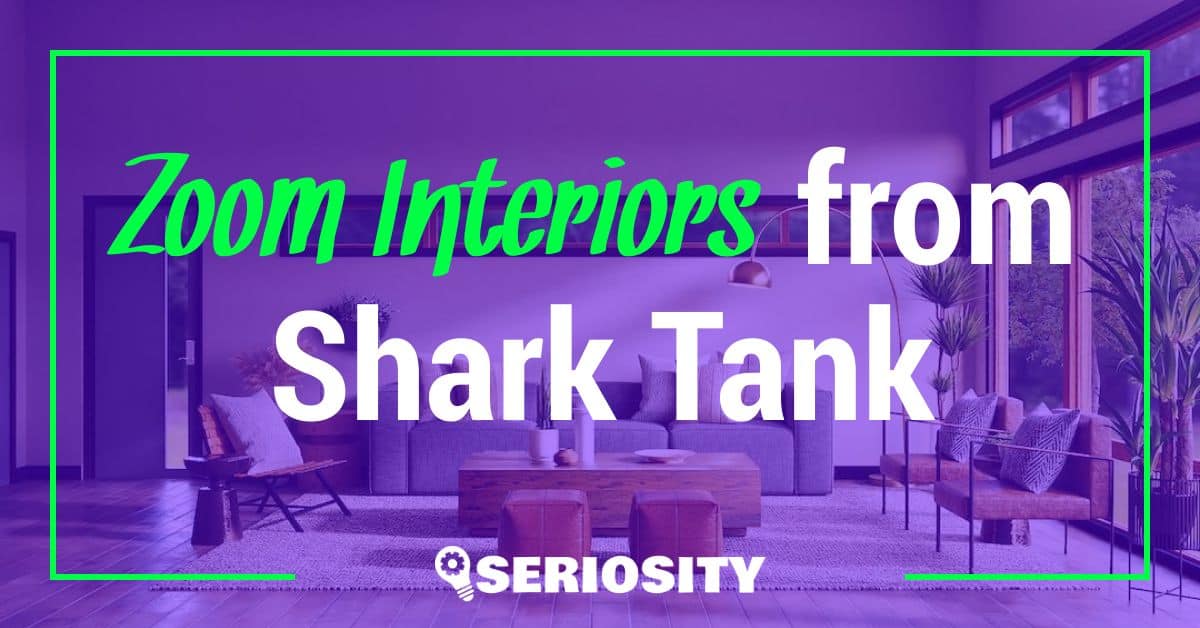Zoom Interiors was formed in 2011 by three former George Washington University students – Elizabeth Grover, Madeline Fraser, and Beatrice Fischel. This company went on the floor in 2012.
Zoom interiors was featured on the Shark Tank. Starting in Philadelphia, Madeline, Elizabeth, and Beatrice introduced themselves and their company in an at-home part. They said they have lofty aspirations and hope that a Shark can assist them in realizing those goals. When they entered the Tank, they presented their offer – $100,000 for 20% of the company. They took a survey and demonstrated the designs. They also presented photos of their work on a television screen.
It doesn’t take Kevin, Mr. Wonderful, long to ask how they make their money. They went into the stats pretty quickly. They said they sold $186,000 worth of goods but only made $3,000. They also said that one out of eight persons who participate in a poll end up purchasing the service. Kevin also wanted to know how they could increase in size. Lori overlapped and asked whether or not they generate their money through product sales; the girls responded yes.
Mark claimed that they need pricey software to mechanize the procedure. Suggesting that, he excused himself. Robert believed the ladies could teach others how to perform consultations without using the software. Mark yelled at them and said they couldn’t use their age as an excuse.
When Barbara inquired about their financial situation, they responded by saying that they planned to work their jobs for a considerable amount of time. That didn’t sit well with Mark. He said that they need to commit themselves entirely to their venture. He advised them to work hard, hustle, and develop themselves.
Robert advised them not to invest in new applications. He went out of the picture because he said he couldn’t brainstorm with them because of a shortage of time. Kevin was out because he believed the business was yet to scale. Lori bowed out due to an unreasonable amount of labor.
Despite Barbara’s enthusiasm for their energy and pricing, she had reservations about developing applications. However, she settled for 33% of the company. The girls agreed.
This deal was never finalized with Barbara. When Barbara announced she would no longer be a part of Zoom Interiors’ management team, the company’s top executives thought the stock was too much to give to someone who would not help them scale.
Sean Rad, Tinder’s co-founder, was thrilled with the Zoom girls’ episode and congratulated them. He reached out to CEO Beatrice Fischel-Bock through Facebook and asked to invest in the company. After Rad’s involvement, the company made a few changes, including changing its name to Homee. They earned $7.2 million.
Homee went on to become an app allowing you to create your own place without restrictions. It stands out in the online interior design sector. Unfortunately, it strayed too far from the company’s original goal. The app went through some changes once again and got renamed, Hutch. However, it did not work. Hutch closed its doors in 2020, and the women who worked there moved on to new endeavors.
Our Review of Zoom Interiors
Clients are turning to the Internet for answers to their interior design questions in a timely and cost-effective manner. Zoom Interiors of Los Angeles was a web service connecting users to interior designers and providing style and buying advice for a one-time, flat cost.
Zoom CEO Beatrice Fischel-Bock said, “Technology improves every area of our life.” To assist clients with their homes, “it was only natural for us to mix technology and interior design.”
Zoom is a web-based video conferencing service. To get started, users answer a few questions about their style preferences, upload a photo of their room and peruse images of finished interiors for inspiration.
Zoom’s designers consider these choices while creating renderings of furniture and decor products from various merchants. Customers then purchase directly from Zoom. Starting at $99 per room, the design concept used to be exceptional, close to what the customer wanted. Additional services included receiving a style rendering, two revisions, a product shopping list, and order and delivery.
Clients that come to them were millennials in the midst of their firsts in life, such as moving into a house with their significant other or establishing their first nursery.
This venture made homebuying accessible, affordable, and straightforward. Those who move frequently or are young and don’t want to spend much time or money on the procedure appreciate it.
Pros
- This app made it easy to avail interior designing services.
- It was relatively cheaper than physical interior designing services.
- Customers could get ideas according to their preferences.
Cons
- The results weren’t 100% accurate.
- The new update of the app didn’t sit well with the customers.
Who is Zoom Interiors For?
Zoom Interior was specifically made for those who want to revamp their living space without spending a fortune. This app helped change the look and feel of the place so the house could turn into a home.
Are There Any Alternatives?
Havenly is another web platform that provides a comparable service to Zoom interiors. Founders Emily Motayed and Lee Mayer are both natives of Potomac. They started the interior design website in 2013 after yearning for a well-designed, cohesive home like their parents. However, they wanted to do it on a budget. Because they don’t charge for consultations or installations as other design firms do, they emerged as a successful venture.
Havenly charges a $199 fee for each room, and their clients receive two concept design boards and a detailed representation of their space with furniture purchased through the same platform. It has evolved into a directed e-commerce platform.
The business owners want to make sure you know exactly how it works for your home before you buy it. Even for young professionals just beginning off, a well-designed and carefully curated house is a vital luxury. They also believed everyone has the right to a peaceful respite from the outside world, regardless of their financial situation.





